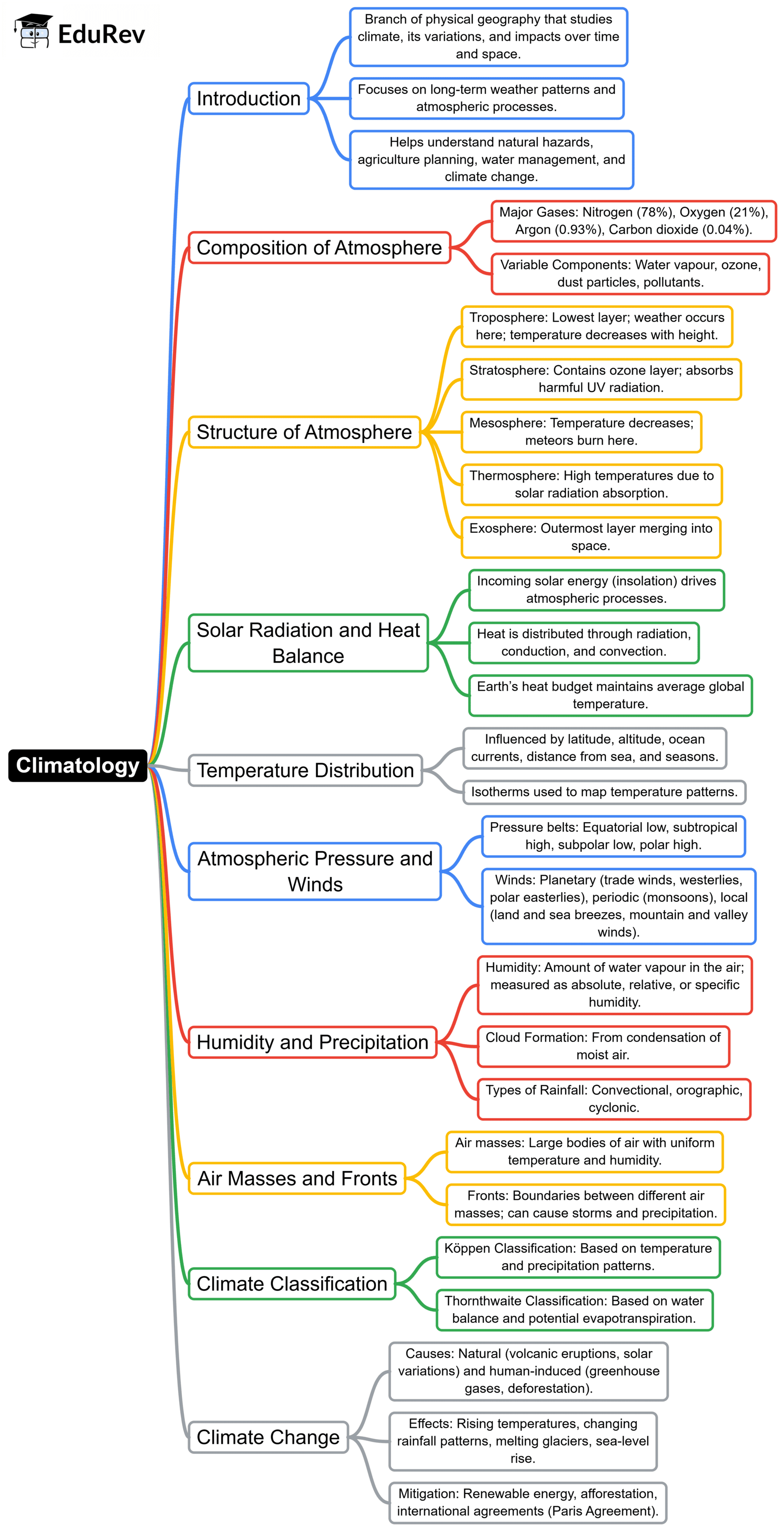UPSC Exam > UPSC Notes > Geography for UPSC CSE > Mind Map: Climatology
Mind Map: Climatology | Geography for UPSC CSE PDF Download

The document Mind Map: Climatology | Geography for UPSC CSE is a part of the UPSC Course Geography for UPSC CSE.
All you need of UPSC at this link: UPSC
|
175 videos|619 docs|192 tests
|
FAQs on Mind Map: Climatology - Geography for UPSC CSE
| 1. What is climatology and how does it differ from meteorology? |  |
Ans.Climatology is the scientific study of climate, which refers to the long-term patterns and averages of weather in a particular area over extended periods, typically 30 years or more. In contrast, meteorology focuses on the short-term atmospheric conditions and weather forecasting. While meteorologists analyze data to predict weather changes, climatologists study historical data to understand climate trends and variations.
| 2. What are the main factors that influence climate? |  |
Ans.Climate is influenced by various factors, including latitude, altitude, proximity to oceans and large bodies of water, ocean currents, and prevailing winds. Latitude affects the amount of solar energy received, while altitude can lead to cooler temperatures. Oceans regulate temperatures and moisture levels, while ocean currents can redistribute heat around the planet, impacting regional climates.
| 3. How do human activities contribute to climate change? |  |
Ans.Human activities such as burning fossil fuels, deforestation, and industrial processes release greenhouse gases like carbon dioxide (CO₂) and methane (CH₄) into the atmosphere. These gases trap heat, leading to a rise in global temperatures, which is a significant driver of climate change. Additionally, land-use changes and urbanization can alter natural climate patterns.
| 4. What are the potential impacts of climate change on ecosystems and biodiversity? |  |
Ans.Climate change can lead to severe impacts on ecosystems and biodiversity, including habitat loss, altered species distributions, and increased extinction rates. Changes in temperature and precipitation patterns can disrupt food chains, affect migration patterns, and lead to the decline of sensitive species. Coral reefs, polar regions, and tropical rainforests are particularly vulnerable to these changes.
| 5. What are some international agreements aimed at combating climate change? |  |
Ans.Some key international agreements include the Kyoto Protocol, which set legally binding targets for greenhouse gas emissions reductions, and the Paris Agreement, which aims to limit global warming to well below 2 degrees Celsius above pre-industrial levels. These agreements encourage countries to take collective action to mitigate climate change impacts and promote sustainable development.
Related Searches
















